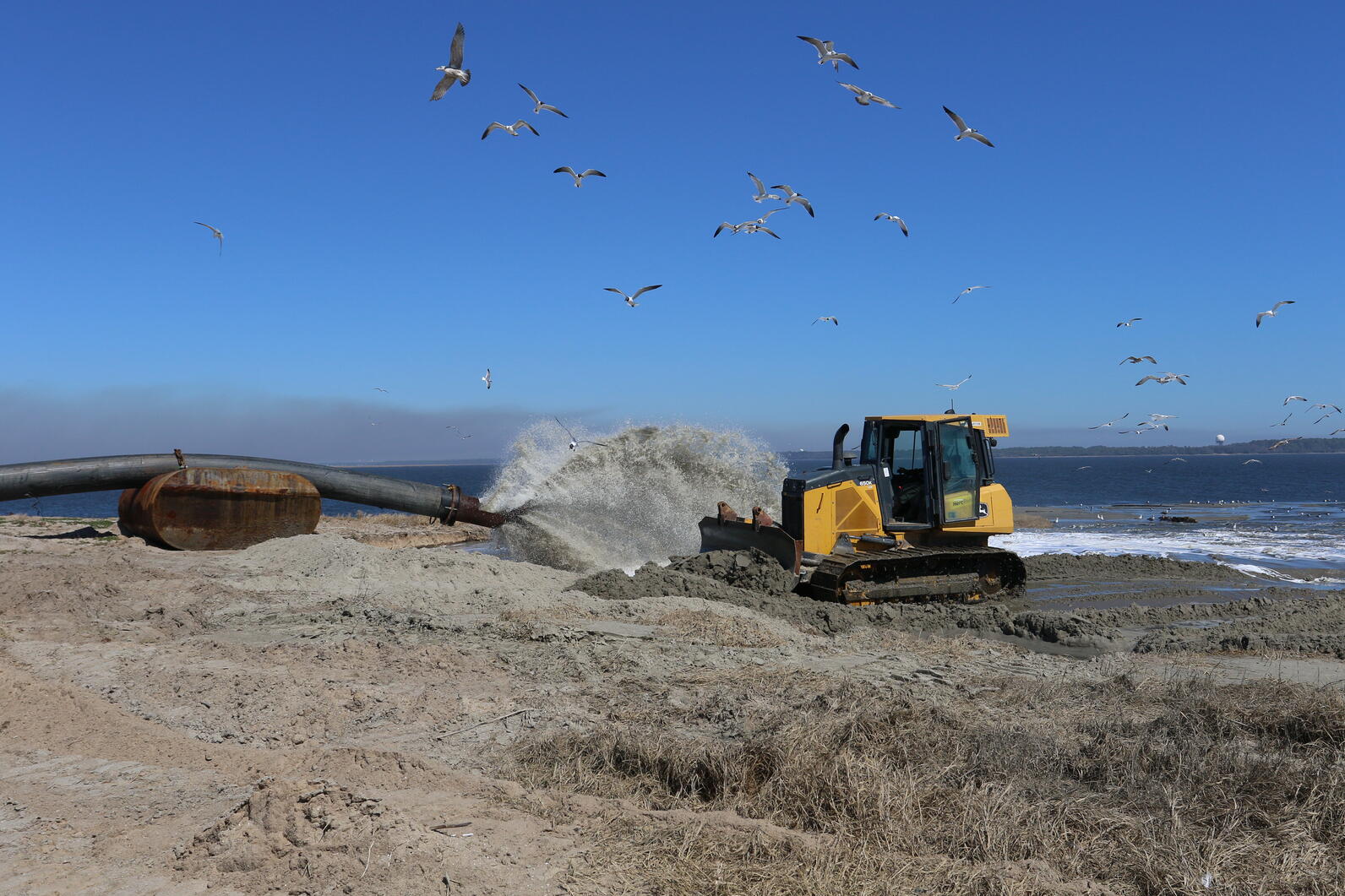WILMINGTON, North Carolina - This week, Audubon North Carolina and the U.S. Army Corps of Engineers completed a long-awaited project to restore Ferry Slip Island in the Cape Fear River, one of the most important places for coastal nesting waterbirds in the state.
The island is home to one of just six Royal Tern and Sandwich Tern colonies in North Carolina and is critically important to the birds’ survival in the state, but it has been eroding away for years. Between 2010 and 2021, the island shrunk by 40 percent, from more than five acres down to almost three.
To combat erosion and restore Ferry Slip, the Army Corps pumped 80,000 cubic yards of dredged sand onto the island, the equivalent of 8,000 dump truck loads. This material came from a shallow area, or “speed bump,” that had built up in the federal navigation channel and was removed to keep the river’s channel open for the Wilmington Port.
The island last received dredge material in 2004. Since then, the dome-shaped spit of sand has slowly shrunk in the face of hurricanes, ship wakes, and rising seas. The new deposits of dredge material will help reinforce the island, doubling it to as much as 7 acres once final measurements are complete, and support nesting birds for years to come.

“Because Royal and Sandwich Terns nest together in just a few highly concentrated groups, losing even one colony can put the larger population at risk,” said Lindsay Addison, Coastal Biologist at Audubon North Carolina. “Ferry Slip Island has been an incredibly important stronghold for these birds, and thanks to our continued partnership with the Army Corps, it will stay that way for years to come.”
For the Army Corps, the Ferry Slip restoration project represents an opportunity to help birds and meet its federal mandate to dispose of sand at least cost. Instead of shipping the dredged material to an offshore disposal site, which is costly, the Army Corps was able to pump it a short distance to Ferry Slip.
“We’re grateful that the stars aligned on this project and that we could figure out a way for birds and people to benefit from maintenance dredging on the river,” said Emily Hughes, Biologist at the U.S. Army Corps of Engineers.
The island’s open, sandy habitat is ideal for Royal and Sandwich Terns, which congregate in huge numbers to nest. More than 3,000 Royal and Sandwich Terns breed on Ferry Slip Island and neighboring South Pelican Island each year—one fifth of the state’s population on just a few acres of sand. The birds lay eggs in small scrapes in the ground and raise their chicks right on the sand.
The kind of open, isolated habitat these birds need has become harder to come by. The loss of low natural islands elsewhere along the North Carolina coast and human disturbance on barrier island beaches make dredged-material islands among the last best places for them to nest.
The threats of erosion and rising seas will continue for these islands. Audubon is working on plans and permitting to expand Ferry Slip and South Pelican Islands in the future.
Ferry Slip Island is managed by Audubon, through a cooperative agreement with the North Carolina Wildlife Resources Commission, and is part of Audubon's larger network of coastal sanctuaries. All told, the network provides a safe place to nest and raise chicks for 40 percent of North Carolina’s coastal nesting waterbirds.
Media Contact: Ben Graham, ben.graham@audubon.org, 919-880-3793
About Audubon North Carolina
Audubon North Carolina, a state program of the National Audubon Society, has offices in Durham, Boone, Corolla, and Wilmington. Learn more at www.nc.audubon.org and on Twitter, Facebook, and Instagram. The National Audubon Society protects birds and the places they need, today and tomorrow. A nonprofit conservation organization since 1905, Audubon works throughout the Americas using science, advocacy, education, and on-the-ground conservation.




